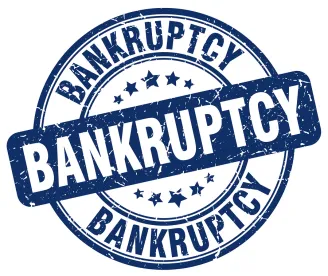On June 25, 2017, Takata’s US arm, TK Holdings Inc. and certain affiliates excluding certain foreign debtors such as Takata Corporation (Japan) (the “Takata US Debtors”),1 filed chapter 11 cases seeking bankruptcy protection in the Bankruptcy Court for the District of Delaware. The Takata US Debtors filed the chapter 11 cases (a) to facilitate a sale of their and their foreign affiliates’ assets to Key Safety Systems (“Key”) (or possibly a bidder, if any, that tops Key Safety Systems’ offer) for approximately USD $1.6 billion, and (b) to address unsecured trade and litigation claim debt and products liability claims stemming from alleged defective airbag components provided by Takata. An announcement was also made that Takata had obtained debtor-in-possession financing of approximately USD $226 million to undertake its contemplated sale and restructuring transactions.
To stabilize its supply chain and operations and thereby maintain its value pending the sale to Key, the Takata US Debtors filed, among other pleadings, a motion requesting that the Bankruptcy Court grant interim and final authority for the Takata US Debtors to pay pre-bankruptcy obligations owed to critical suppliers (the “Critical Vendor Motion”). Pursuant to the Critical Vendor Motion, the Takata US Debtors seek authority to pay up to approximately $36 million on an interim basis, and up to $48 million on a final basis, of prepetition claims of suppliers that the Takata US Debtors deem critical to their operations, in exchange for a critical supplier signing a Vendor Agreement pursuant to which the critical supplier would agree to continue to supply the Takata US Debtors on the normal and customary trade terms (including credit limits, pricing rebates, cash discounts, timing of payments, coupon reconciliation and other applicable terms and programs) that were most favorable to the Takata US Debtors in effect between such critical supplier and the Takata US Debtors within the 24 month period prior to the bankruptcy filing. At the First Day Hearing held on June 27, 2017, the Bankruptcy Court granted the Critical Vendor Motion on an interim basis and set a final hearing for July 26, 2017.
Also at the First Day Hearings, the Bankruptcy Court approved the Takata US Debtors’ entry into (once finalized and signed by the OEMs, the deadline for which is July 7, 2017) access and accommodation agreements pursuant to which the Takata US Debtors’ OEM customers will fund operations through advance payments on parts shipments and waivers of setoff rights, with the OEM’s receiving secured and priority claims in the Takata US Debtors’ assets in exchange. The form access and accommodation agreement (which is expected to be executed by the OEMs) contains milestones that the Takata US Debtors must meet, including that a sale agreement with Key, and a restructuring support agreement with Key and the OEMs, and certain settlement agreements must be agreed to in form by July 17, 2017 and signed by July 31, 2017. The access and accommodation agreement also provides that the sale to Key (or presumably any higher bidder) must be closed and a chapter 11 plan for the Takata US Debtors effective and restructuring completed by February 27, 2018.
In connection with the proposed sale of the Takata US Debtors’ business, pursuant to the United States Bankruptcy Code, the Takata US Debtors will likely at some point seek broad authority from the Bankruptcy Court to assume and assign (i.e., sell) “executory contracts” (meaning contracts which are still in effect and have obligations outstanding on both the supplier and Takata US Debtor sides) to Key or any party who might outbid Key, notwithstanding any prohibitions against assignment that are in the contracts. Whether or not a supplier is a “critical vendor,” in order to assume and assign any executory supply contract, pursuant to the Bankruptcy Code, the Takata US Debtors would be required to “cure” (i.e. pay) any outstanding arrearages and defaults under each contract and provide adequate assurance that the contract would be performed in the future. Therefore, this provides another potential option to be paid prepetition debt in the bankruptcy case.
Suppliers to the Takata US Debtors should immediately review their contracts and supply arrangements and:
-
Evaluate whether they might be treated as critical vendors entitled to payment of prepetition debt and seek such payment, as well as determine whether the supplier’s contracts are likely to be selected by the Takata US Debtors and Key to be assumed and assigned as part of the sale or assumed and retained by the Takata US Debtors in connection with their chapter 11 plan. This evaluation includes, among other matters, the following factors:
-
Whether the parts or other goods supplied are necessary for ongoing production, and are sole source, or can be re-sourced easily. This may include PPAP and safety-related considerations.
-
Whether the contracts are long term agreements or short term “spot buy” commitments that may have terminated or may terminate imminently.
-
Whether, absent payment, the supplier itself might be unable to continue supply the relevant goods.
-
-
Determine the Takata entities that are the counterparties to those contracts and whether they are subject to the US bankruptcy case or another foreign insolvency proceeding, or are instead continuing to do business and pay accounts owed to suppliers in the ordinary course of business.
-
Exercise caution to avoid violating the automatic stay of the U.S. Bankruptcy Case by demanding payment of prepetition obligations outside of authority granted by the Bankruptcy Court.
-
Determine how much is owed for goods shipped to the Takata US Debtors in the 20 days before the bankruptcy case was filed, because this amount is entitled to a special administrative claim priority and required to be paid in full in cash for the Takata US Debtors to confirm a chapter 11 plan, separate from the contemplated sale.
-
As a protective measure, submit appropriate reclamation claims immediately to the Bankruptcy Court to protect rights to reclaim goods subject to any superior inventory liens of inventory lenders to the Takata US Debtors.
Evaluate any intellectual property licenses with the Takata US Debtors, as those may be affected by provisions of the Bankruptcy Code and efforts by the Takata US Debtors to sell assets free and clear of other parties’ rights.
1 The Takata US Debtors are: Takata Americas, TK Finance, LLC, TK China, LLC, TK Holdings Inc., Takata Protection Systems Inc., Interiors in Flight Inc., TK Mexico Inc., TK Mexico LLC, TK Holdings de Mexico S. de R.L. de C.V., Industrias Irvin de Mexico, S.A. de C.V., Takata de Mexico, S.A. de C.V., and Strosshe-Mex, S. de R.L. de C.V.





 />i
/>i
